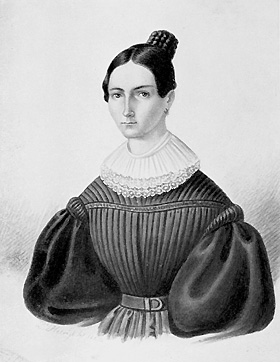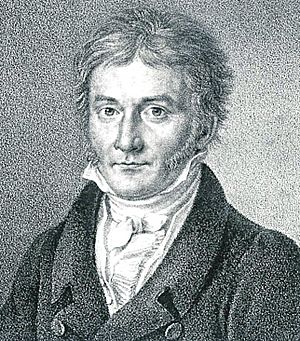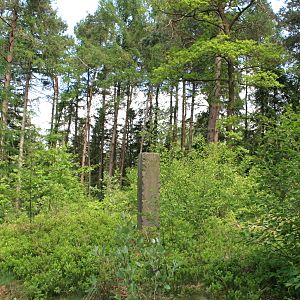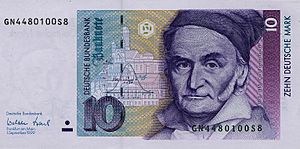Carl Friedrich Gauss facts for kids
Quick facts for kids
Johann Carl Friedrich Gauss
|
|
|---|---|

Carl Friedrich Gauss, painted by Christian Albrecht Jensen
|
|
| Born | 30 April, 1777 |
| Died | 23 February, 1855 |
| Nationality | |
| Alma mater | Helmstedt University |
| Known for | Number theory The Gaussian Magnetism |
| Scientific career | |
| Fields | Mathematician and physicist |
| Institutions | Georg-August University |
| Doctoral advisor | Johann Friedrich Pfaff |
| Doctoral students | Friedrich Bessel Christoph Gudermann |
Johann Carl Friedrich Gauss (born April 30, 1777, died February 23, 1855) was a brilliant German mathematician. He also worked as a physicist. Gauss made huge contributions to many areas of science. These included number theory, algebra, statistics, astronomy, and physics.
People often called him the 'Prince of Mathematicians'. Many consider him one of the most important mathematicians ever. His ideas greatly influenced how we understand math and science today.
Contents
About Gauss
Early Life
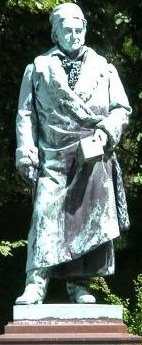
Johann Carl Friedrich Gauss was born on April 30, 1777. His birthplace was Brunswick, which is now part of Germany. His parents were not wealthy.
Gauss was a child prodigy, meaning he was incredibly smart from a very young age. There are many stories about his early genius. One story says that when he was just three years old, he corrected a math mistake his father made. He did this in his head, without any paper or pen!
Another famous story happened when Gauss was in primary school. His teacher, Mr. Büttner, gave the class a difficult task. He asked them to add up all the numbers from 1 to 100. The teacher expected this to take a long time. But young Gauss quickly found the answer in seconds. He did this by noticing a clever pattern. He realized that 1+100 equals 101, 2+99 equals 101, and so on. There are 50 such pairs. So, the answer was 50 times 101, which is 5050. His teacher was amazed!
The year 1796 was very important for Gauss. He made many discoveries in number theory. For example, he found a way to draw a 17-sided shape (a heptadecagon) using only a compass and a straightedge. This was a big deal because it had never been done before. He also made modular arithmetic much simpler. This is a way of doing math with remainders.
Family Life
Gauss had six children. He had three children with his first wife, Johanna: Joseph, Wilhelmina, and Louis. After Johanna passed away, he married Minna Waldeck. With Minna, he had three more children: Eugene, Wilhelm, and Therese.
His son Eugene was also very good at languages and math. His daughter Therese took care of him until he died.
Personality
Carl Gauss was a very dedicated and hard-working person. He was a perfectionist. This meant he would only publish his work if he thought it was absolutely perfect. He didn't want to share anything he felt wasn't completely finished and correct.
Gauss supported the idea of a monarchy (rule by a king or queen). He did not like Napoleon, who he saw as a symbol of revolution.
Death
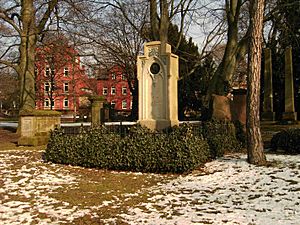
Gauss died in Göttingen, Germany, on February 23, 1855. He was buried in the Albani Cemetery there. Two people spoke at his funeral. One was his son-in-law, Heinrich Ewald. The other was Wolfgang Sartorius von Waltershausen, who was a close friend and wrote about Gauss's life.
Amazing Achievements
Algebra
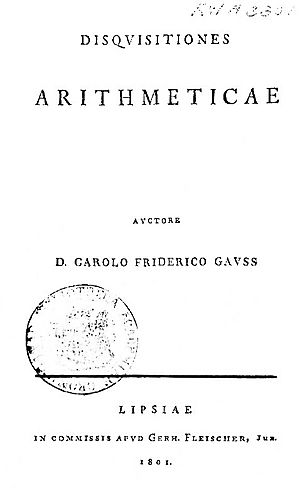
In 1799, Gauss proved a very important idea in algebra. It's called the fundamental theorem of algebra. This theorem says that every polynomial equation (a type of math problem) with complex numbers has at least one solution. This was a huge step forward in mathematics.
Gauss also made many other important discoveries in number theory. This is the study of whole numbers and their properties.
Astronomy
When Gauss was 23, scientists found a new asteroid called Ceres. But they couldn't see it for very long. This made it hard to figure out its path in space. Gauss used his amazing math skills to calculate its exact orbit. Because of his calculations, scientists were able to find Ceres again.
Mapping the Land
In 1818, Gauss used his math skills for a practical purpose. He helped create a detailed map of the Kingdom of Hanover. This was a large area in Germany. To help with this mapping, Gauss invented a special tool called the heliotrope. This instrument uses a mirror to reflect sunlight over long distances. It helped him measure positions very accurately.
Honoring Gauss
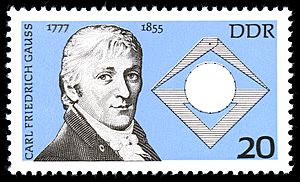
From 1989 to 2001, Gauss's picture was on the German ten-mark banknote. The banknote also showed a normal distribution curve (a bell-shaped graph) and buildings from Göttingen. Germany has also made three postage stamps to honor him.
Many things are named after Gauss to remember his important work:
- The Normal Distribution, also known as the bell curve, is used in statistics.
- The Gauss Prize is one of the highest awards in mathematics.
- Gauss's law and Gauss's law for magnetism are important rules in physics.
- The unit for magnetic field strength is called a gauss.
- A crater on the Moon is named Gauss.
- The Asteroid 1001 Gaussia is named after him.
- The ship Gauss was used for an expedition to Antarctica.
- Gaussberg is an extinct volcano discovered during that expedition.
- The Gauss Tower is an observation tower in Germany.
- There is a math competition for junior high students in Canada called the Gauss Mathematics Competition.
Images for kids
-
Statue of Gauss at his birthplace, Brunswick
-
Gauss's gravesite at Albani Cemetery in Göttingen, Germany
See also
 In Spanish: Carl Friedrich Gauss para niños
In Spanish: Carl Friedrich Gauss para niños


